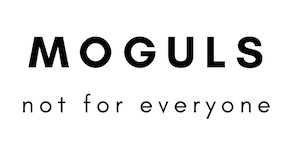Here’s some useful data on US historical asset class returns, both in regular ol’ USD terms and, more usefully for UK investors, GBP flavour.
By converting US returns into sterling and subjecting them to the wealth-stripping acid of UK inflation, we can see if American investment exceptionalism holds up for Brits.
We’ll start with US asset class real returns including reinvested income (in USD) since 1900:

Data from JST Macrohistory1 and Aswath Damodaran. July 2024.
As you can see, equities (stocks) have done much better than bonds or cash over the long-term.
Three important caveats:
- The seemingly inexorable rise of equities disguises many setbacks, such as the 2008/9 bear market.
- The US has been one of the very best performing countries in stock market terms over the past 124 years. Extrapolating this to other regions (or even into the future) could be misleading.
- A UK investor putting money to work in the US faces currency risk, which can increase or reduce your returns, as we’ll see below.
Let’s now look more closely at US historical annualised2 asset class returns including gold and commodities.
US asset class annualised returns (% per annum)
| 2023 | 10 years | 20 years | 50 years | 90 years | 124 years | |
| Equities (stocks) | 21.9 | 9.2 | 7 | 7.1 | 7.1 | 6.7 |
| Government bonds | 0.5 | -0.4 | 1.1 | 2.7 | 1.4 | 1.4 |
| Gold | 9.2 | 2.3 | 5.6 | 2 | 1.3 | 0.7 |
| Commodities | -10.9 | -3.8 | -2.6 | 0.5 | 3.4 | – |
| Cash (Treasury bills) | 1.6 | -1.4 | 0.9 | 1 | 0.4 | 1 |
Data from Summerhaven3, BCOM TR, JST Macrohistory4, Aswath Damodaran, The London Bullion Market Association, and Measuring Worth. July 2024.
Investing returns sidebar – All returns quoted are inflation-adjusted, annual total returns (including dividends and interest). Investing fees are not included.
As the table shows, US equities have delivered returns far ahead of inflation.
There are only a few other stock markets in the world that can compete with the US, as our World equities post reveals. (That article needs an update, but if you’re thinking Scandinavia and the other Anglophone countries are contenders – plus South Africa – then you’re on the right lines.)
While USD gold and commodity results are nothing to write home about, their government bond and cash returns have trounced their UK equivalents even more soundly than equities in relative terms.
But the question is: do monster-truck size US profits hold up for UK investors once brought ashore?
US asset class annualised returns in GBP (% per annum)
| 2023 | 10 years | 20 years | 50 years | 90 years | 124 years | |
| Equities (stocks) | 16.5 | 11.6 | 8.3 | 7.5 | 7.3 | 6.9 |
| Government bonds | -4 | 1.8 | 2.3 | 3.1 | 1.6 | 1.6 |
| Gold | 5 | 4.9 | 7.1 | 2.3 | 1.4 | 0.9 |
| Commodities | -15.9 | -1.4 | -1.3 | 0.6 | 4 | – |
| Cash (Treasury bills) | -2.9 | 0.8 | 0.3 | 1.4 | 0.6 | 1.1 |
Source: see table one
The pound strengthened against the dollar in 2023, weakening US returns once translated into sterling. Moreover, our annual inflation rate was considerably worse too, reducing a UK investor’s real return further.
Over longer periods, the secular decline of the pound has boosted US returns for UK investors: a useful hedge for the loss of purchasing power associated with our waning influence.
And yet over the very long-term, it’s mattered little whether you consumed your US profits in pounds or dollars. On the UK side, the currency gains were mostly offset by our higher inflation (see the 124-year column).
Most Monevator readers likely invest in a global tracker fund and thus their fortune depends far more upon US equities than any other market.
But should we also be positioned in US Treasuries ahead of gilts?
Well, read that article and you’ll see that superior US bond returns don’t always arrive when we need them – i.e. in the midst of a stock market crisis.
Using historical asset class returns
An understanding of historical returns is important because it helps us get over behavioural quirks such as recency bias.
Recency bias is the tendency we all have to think that things will continue in the same vein as they have recently, even when the long-term data says otherwise.
For instance, if you go out in a T-shirt and shorts in October in Scotland without checking the weather forecast – just because it was sunny yesterday and the day before – then you are suffering from recency bias.
(You’ll probably soon be suffering from the flu, too!)
Hence it’s very misleading to consider just the last couple of years of asset class returns when deciding how to construct a long-term portfolio.
Only cash and very short-term government bonds provide a secure return over a short period.
All other asset classes are too volatile for that.
For example, let’s consider the equivalent historical data for the US as seen from the vantage point of 2013.
Returns to 2013: US asset class annualised returns in GBP (% per annum)
| 2013 | 10 years | 20 years | 50 years | 90 years | 114 years | |
| Equities (stocks) | 28.8 | 5.1 | 6.5 | 5.5 | 7.1 | 6.4 |
| Government bonds | -13.8 | 2.7 | 3.7 | 2.5 | 2.1 | 1.5 |
| Gold | -30 | 9.4 | 3.2 | 2.8 | 1.5 | 0.5 |
| Commodities | -12.6 | -1.1 | 2.2 | 2.1 | – | – |
| Cash (Treasury bills) | -0.4 | -0.2 | 0.9 | 1.6 | 1.2 | 1.1 |
Source: see table one
You can see the long-term return figures are little changed (for instance, equities had returned 6.4% p.a. over the 114 years to 2013, versus 6.9% p.a. over 124 years to 2023).
Shorter-term though, things are different.
Against popular expectations, 2013 was a stellar year for US stocks. Yet 10-year returns still bore the scars of the Global Financial Crisis, while bonds and gold were uplifted by the same.
Over the longer term, the traits of the different asset classes typically reassert themselves, although the true potential of gold is still a mystery.
The long and short of it
Stocks tend to outpace other asset classes over the medium to long-term precisely because they are far riskier over the short-term.
If the expected returns from equities weren’t higher than bonds, then nobody would choose to own them over less volatile and ultra-safe bonds – and the prices of stocks would accordingly fall until their expected returns rose.
That’s exactly what happened after bubbly periods for equities such as 1999 or 1929.
But while all this looks obvious in hindsight, timing the market to try to avoid booms and busts is notoriously difficult.
Nearly all the methods of stock market forecasting you’ll read about have proven very unreliable, and the best method isn’t much better than that.
This means that most people trying to save and invest for the future are best advised to follow a passive investing strategy, rebalancing their portfolios periodically to smooth out the booms and busts.
Over the long term – such as 40 years of investing towards retirement – the characteristics of different asset classes such as stocks, bonds, and cash should play out like they have in the past.
For that reason, if you’re using an investment return or compound interest calculator then it’s okay to use long-term historical returns as a proxy for the interest rate function required. Just bear in mind that the US stock market has been one of the best-performing of all developed world nations.
UK historical asset class returns offer a more cautious reference point.
- Òscar Jordà, Katharina Knoll, Dmitry Kuvshinov, Moritz Schularick, and Alan M. Taylor. 2019. “The Rate of Return on Everything, 1870–2015.” Quarterly Journal of Economics, 134(3), 1225-1298. [↩]
- The average annual percentage amount by which each asset grew (or shrunk) over the period. [↩]
- Bhardwaj, Geetesh and Janardanan, Rajkumar and Rouwenhorst, K. Geert, “The First Commodity Futures Index of 1933,” Journal of Commodity Markets, 2020. [↩]
- Òscar Jordà, Katharina Knoll, Dmitry Kuvshinov, Moritz Schularick, and Alan M. Taylor. 2019. “The Rate of Return on Everything, 1870–2015.” Quarterly Journal of Economics, 134(3), 1225-1298. [↩]




